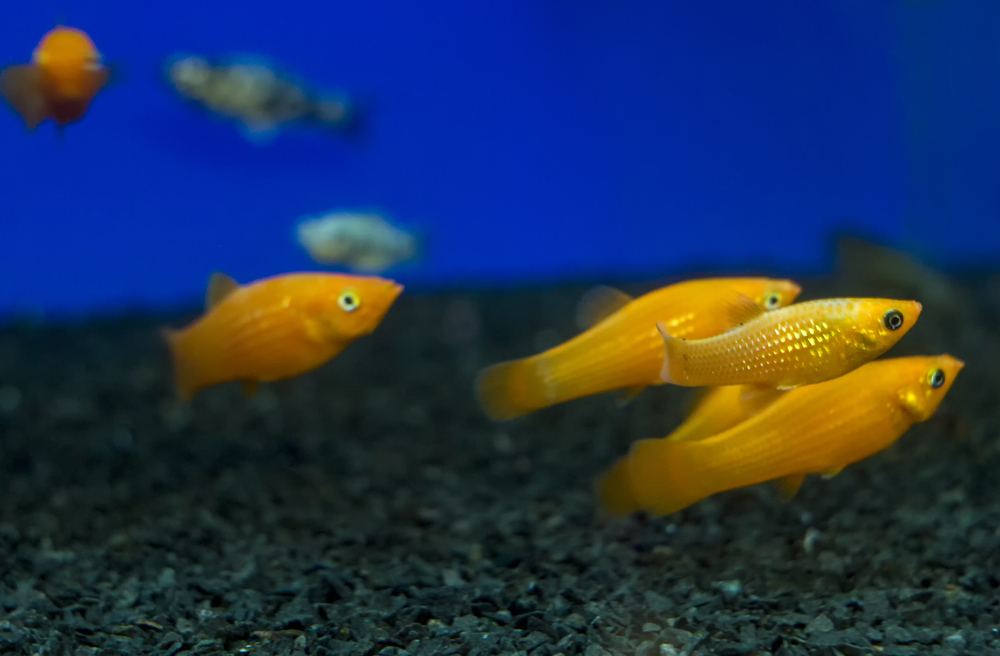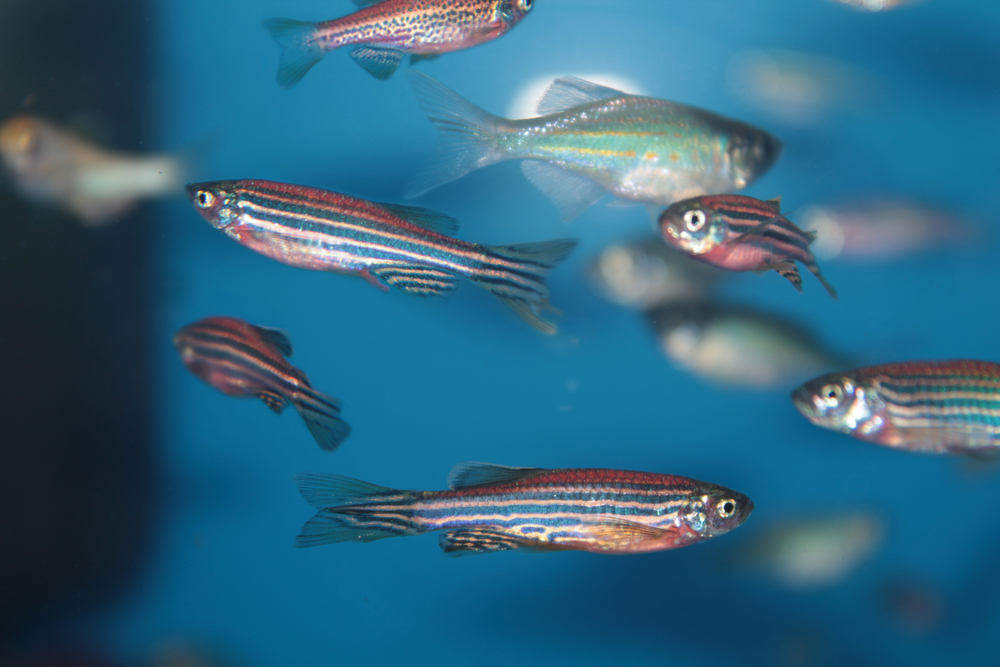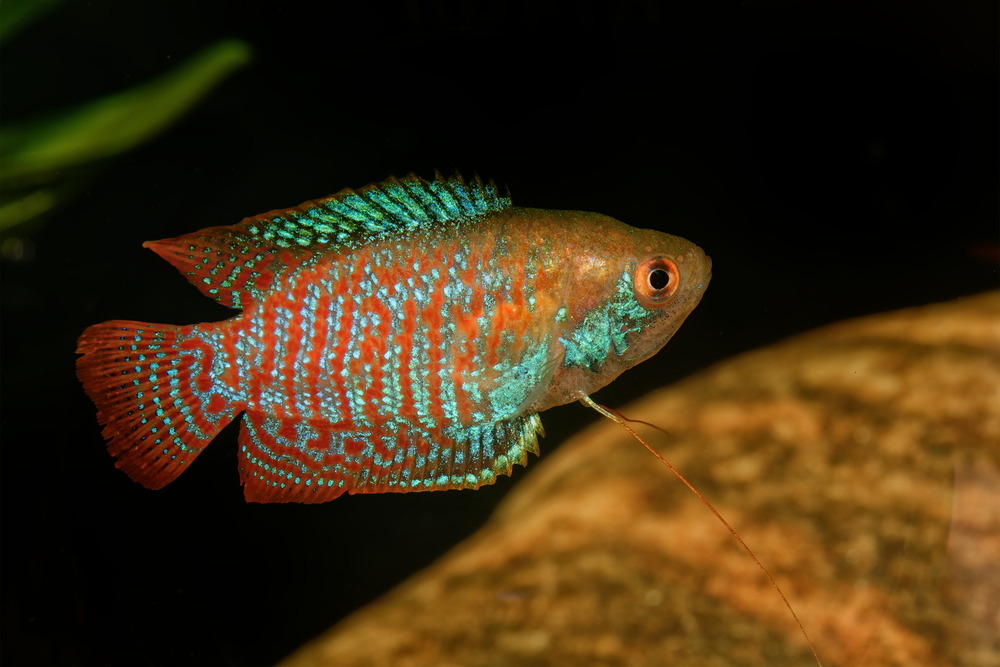Are you a beginner in the world of aquarium keeping? Are you looking for some hardy and easy-to-look-after tropical fish that will make your tank shine? Look no further! Here is our list of the 9 best tropical fish for beginners, perfect if this is your first foray into the fascinating hobby. This article will provide detailed information on Guppy, Molly, Zebra Danios, Dwarf Gouramis, Bettas and more, so that you can make an informed decision when stocking up your tank. So don’t wait any longer – read on to find out more about these amazing aquatic creatures!
Guppy

The guppy is a small, colourful fish that typically grows to be between 1.5 and 2.5 inches in length. It has an elongated body with a large tail fin and dorsal fin, both of which are often brightly coloured. Its colouration can range from bright yellow to deep blue or even black, depending on the variety of guppy being kept.
Care Requirements
Guppies require clean water with temperatures ranging from 22-28°C. They also need plenty of hiding places, such as plants or rocks, for them to feel secure in their environment. A weekly partial water change should also be done to keep their tank clean and healthy for them to thrive in.
Breeding Habits
Breeding guppies is relatively easy compared to other species of fish, making it ideal for beginner aquarium hobbyists who want some experience breeding fish before attempting more difficult species like cichlids or discus fish. Guppies will spawn multiple times throughout the year if given proper care and conditions; however, they are known for producing many offspring at once, so it’s important that you have enough space available in your tank when they do breed!
Tank Mates
When selecting tank mates for your guppies, it’s important to choose peaceful species that won’t harass them too much, as this can cause stress on the guppy population over time leading to health issues down the line. Some good choices include tetras, rasboras, mollies and platys – all of which prefer similar water parameters as the guppy does but don’t compete with them for food sources either.
If proper maintenance is done, there should not be any major health concerns associated with keeping these hardy little fish. However, they may still suffer from common illnesses such as Ich or Velvet if not cared for correctly. Therefore, it is important to do regular water changes and monitor ammonia levels closely to prevent any potential issues.
Molly

The molly is a small, colourful fish that comes in many varieties. They have an elongated body with a rounded head and can be found in shades of black, grey, yellow, orange and white. Some species may also have stripes or spots on their bodies.
Care Requirements
Mollies are relatively easy to care for and require minimal maintenance. They prefer warm water temperatures between 24-28°C and should be kept in an aquarium with plenty of plants and hiding places. A weekly partial water change is recommended to keep the tank clean and healthy for the fish.
Breeding Habits
Breeding mollies is not difficult as long as you provide them with the right conditions, such as a larger tank with plenty of vegetation where they can hide their eggs from predators. You will need both male and female mollies present to breed successfully; males tend to be more brightly coloured than females, while females are usually plumper when viewed from above due to carrying eggs inside them.
Tank Mates
Mollies make great community fish because they get along well with other peaceful species such as tetras, guppies, platys or corydoras catfish but should not be kept with aggressive species like Oscars or Cichlids since these could harm them due to their small size. It’s best to avoid keeping different types of livebearers together since this could lead to hybridization, weakening the gene pool over time if left unchecked by experienced aquarists who know how to identify hybrids before they become too numerous within a tank population.
Zebra Danios

Also known as zebrafish, the zebra danio is a small, active fish that can bring life and colour to any aquarium. It has an elongated body with two black stripes running along its length. The fins are transparent, and the tail fin is forked. These fish grow up to 2 inches in length and can live for up to 5 years if properly cared for.
Care Requirements
The zebra danio requires a temperature range of 72-78°F, pH 6-7, and water hardness between 4-20 dGH. They should be kept in an aquarium of at least 10 gallons with plenty of hiding places, such as rocks or plants. A good filtration system is also necessary to keep the water clean and healthy for these fish.
Breeding Habits
Breeding zebra danios is relatively easy compared to other species of tropical fish due to their hardiness and adaptability when it comes to spawning conditions. When ready, females will lay eggs on flat surfaces such as leaves or rocks, while males fertilise them externally by releasing sperm into the water column near the eggs. Once hatched, fry should be fed infusoria until they reach 1/4 inch in size before being switched over to baby brine shrimp or finely crushed flake food.
Tank Mates
Zebra Danios are peaceful community tank dwellers that do well with other small schooling species like tetras or barbs but should not be housed with larger aggressive species like cichlids which may bully them or eat their young fry once spawned.
There shouldn’t be too many health concerns associated with keeping zebra danios in captivity as long as proper care requirements are met. However, they can still suffer from common diseases such as white spot, caused by parasites which can easily spread among schools. Therefore, regular water changes are recommended, along with using medications if needed.
Dwarf Gouramis

Dwarf Gouramis are small, colourful fish that make great additions to any freshwater aquarium. They have a peaceful temperament and can live in both community and single-species tanks. They come in a variety of colours, ranging from bright blue to yellow or orange. They have an elongated body shape with long fins and tails. Males tend to be more brightly coloured than females, but both sexes have the same basic appearance.
Care Requirements
Dwarf Gouramis require clean water with temperatures between 22-28°C. The pH should be between 6.5 – 7.5, and the hardness should range from 5 – 15 dGH (degrees general hardness). A filter is recommended for optimal water quality as well as regular partial water changes every two weeks or so, depending on tank size and stocking levels.
Breeding Habits
Breeding Dwarf Gouramis can be done in either a separate breeding tank or within their main aquarium if it is large enough with plenty of hiding places for fry (baby fish), such as floating plants or rocks/driftwood arranged into caves/crevices for them to hide in when they hatch out of their eggs after being laid by the female parent fish onto flat surfaces like leaves or stones within the tank environment.
Tank Mates
When selecting tank mates for your Dwarf Gourami, it’s important to choose species that won’t bully them due to their smaller size compared to other types of gourami species available on the market today. Avoid larger aggressive species such as angelfish which may pick on your dwarf gourami due its diminutive size.
There are potential health concerns associated with keeping dwarf gouramis, such as bacterial infections caused by poor water conditions or quality which can lead to fin rot and dropsy. If not caught early and treated appropriately using antibiotics prescribed by a qualified veterinarian specialising in aquatic medicine, these illnesses can quickly spread throughout an entire population.
Other Honourable Mentions
Betta
One of the most popular tropical fish for beginners is the Betta Splendens, also known as the Siamese Fighting Fish. This species of fish is hardy and easy to care for, making it ideal for novice aquarists. It can be kept in small tanks with little maintenance required and comes in a variety of vibrant colours. Bettas are active swimmers that prefer warm water temperatures between 75-82°F (24-28°C). They will thrive on high-quality flakes or pellets supplemented with frozen or live foods such as bloodworms or brine shrimp. With proper care, these beautiful fish can live up to 3 years!
Angelfish
Angelfish have tall, triangular bodies and long fins that give them a graceful appearance. They come in many different colours, including black, blue, silver, gold and even striped varieties. These fish can grow up to 6 inches in length and live up to 10 years when properly cared for.
Discus Fish
Discus fish are known for their vibrant colouration, which ranges from yellow-orange to red-brown or blue-green, depending on the species. They have flat bodies with round tails and short fins, which make them well-suited for swimming around obstacles like rocks or plants in the tank. Discus can reach lengths of 8 inches but usually stay smaller than other types of tropical fish, such as angelfish or tetras.
Neon Tetra Fish
Neon tetras are one of the most popular types of freshwater aquarium fishes due to their small size (up to 1 inch) and beautiful neon stripe along their sides which glows brightly under certain lighting conditions. These schooling fishes should always be kept in groups so they feel safe while swimming around your tank; they also enjoy eating small insects found near plants or decorations within your tank’s environment.
Corydoras
These catfish are bottom dwellers that love scavenging around, looking for food scraps left behind by larger inhabitants such as cichlids or angelfish. These peaceful little creatures come in various sizes ranging from 1 to 4 inches long, with attractive markings on their backsides. They are also great at keeping algae growth down if there is any present inside your aquarium setup.
Conclusion
In conclusion, our list of tropical fish for beginners is a great starting point for any new aquarium keeper. From Guppies to Bettas, these hardy and easy-to-look-after species can help you get started in your journey into the wonderful world of fish keeping. Remember that each type of fish has its own unique needs when it comes to water parameters and tank size, so be sure to do your research before purchasing any new additions.
Additional Resources

Ash is a contributing author who has been writing about wildlife for as long as he can remember. He has a vast knowledge of many different types of animals, from the tiniest shrews to the great whales that live in the deepest oceans.
